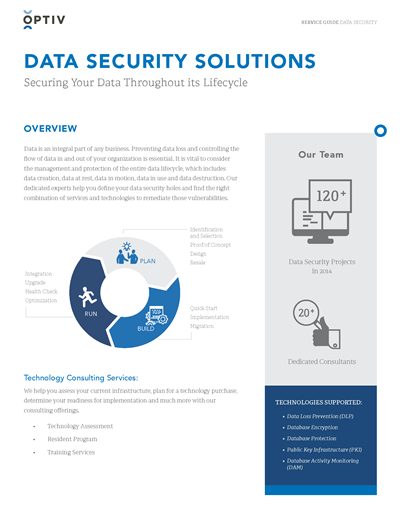How to Incorporate Data Destruction Techniques into Your Cyber Security Method
How to Incorporate Data Destruction Techniques into Your Cyber Security Method
Blog Article
The Significance of Effective Data Damage Practices in Shielding Sensitive Info and Ensuring Computer Safety And Security
In a period where information breaches are significantly usual, the relevance of effective information devastation techniques can not be overstated. Executing durable information devastation approaches not just alleviates these dangers however likewise aligns with legal conformity demands, making sure that organizations maintain their track record and foster client depend on.
Comprehending Information Devastation
Comprehending information damage is vital in today's electronic landscape, where sensitive details can easily be endangered. Efficient data devastation includes not merely making certain however deleting data that information is irretrievable with extensive approaches. This process is important for companies that deal with private customer information, intellectual home, or inner documents, as any type of breach can result in extreme financial and reputational repercussions.
Information destruction incorporates different strategies, consisting of shredding physical media, degaussing magnetic storage gadgets, and using software-based options that overwrite information several times. Each method offers a specific function and has to line up with the level of sensitivity of the info being dealt with. Physical devastation is usually preferred for difficult drives consisting of extremely private information, while software approaches could suffice for less sensitive details.
Additionally, sticking to market requirements and guidelines, such as the General Information Security Regulation (GDPR) or the Health And Wellness Insurance Policy Transportability and Accountability Act (HIPAA), is critical for conformity and to minimize lawful threats. Organizations has to establish a robust data devastation plan, train employees on ideal methods, and on a regular basis investigate their treatments to make sure that all sensitive details is disposed of firmly and efficiently.
Risks of Inadequate Practices
Insufficient data devastation practices reveal organizations to significant dangers that can have significant consequences. When delicate info is not properly taken care of, it continues to be prone to unauthorized accessibility, which can result in information breaches and identification burglary. Such occurrences not only endanger the protection of individuals yet also taint the organization's track record, resulting in a loss of client trust and prospective economic repercussions.
Additionally, regulatory conformity is progressively stringent in lots of industries. Failing to follow data damage regulations can lead to hefty fines and lawsuits versus organizations. These fines can stress monetary resources and divert focus from core service procedures.
On top of that, the misuse of residual data can lead to copyright burglary or company espionage, jeopardizing affordable benefits (data destruction). The impact of insufficient data devastation prolongs past instant financial losses; it can likewise cause long-term damages to brand name integrity and market setting

Organizations should identify that information security is not exclusively about stopping breaches; it additionally incorporates the responsible management of data throughout its lifecycle. Neglecting reliable information devastation methods can have devastating effects, underscoring the necessity for durable measures to mitigate these threats.
Ideal Practices for Information Damage
Executing effective information damage methods is vital for securing sensitive information and keeping conformity with regulative standards. Organizations ought to embrace a multi-faceted method to guarantee that data is irretrievable, thereby avoiding unauthorized gain access to and prospective breaches.
First, data should be classified based on sensitivity, allowing companies to use appropriate damage techniques customized to the degree of risk. For resource electronic data, making use of software-based data-wiping devices that follow industry criteria can properly overwrite existing data. Physical damage approaches, such as shredding or degaussing, are essential for gadgets that save delicate information, guaranteeing total eradication.
Establishing a clear information retention policy is essential, detailing the length of time different kinds of info ought to be retained prior to destruction. Normal audits of data storage systems are also necessary to determine unnecessary or obsolete data requiring removal.
In addition, training workers on the significance of information damage and the specific methods to follow fosters a society of safety and security within the company. Finally, keeping paperwork of information destruction refines provides responsibility and sustains compliance with outside laws and internal policies. By adhering to these best techniques, organizations can dramatically reduce the threats connected with data direct exposure.
Legal and Compliance Considerations

Failure to adhere to these regulations can cause severe fines, including significant fines and more information reputational damages. Organizations has to execute a robust information destruction plan that lines up with these lawful frameworks and offers clear guidelines on the appropriate techniques of data disposal, whether physical shredding or digital cleaning.
Additionally, preserving documentation of data devastation activities is vital for showing conformity during audits or evaluations. By focusing on lawful and conformity considerations, organizations can improve their information protection posture and foster count on with stakeholders and customers, ultimately adding to a much more safe and secure data management setting.
Benefits of Effective Data Destruction
Effective data damage methods extend beyond mere compliance; they provide considerable benefits to companies that prioritize them. By ensuring that sensitive information is irretrievably destroyed, organizations mitigate the danger of information breaches and the prospective financial consequences related to them. This proactive method not just safeguards against unapproved accessibility but likewise improves the general dependability of the company in the eyes of customers and stakeholders.
Carrying out durable information devastation methods, such as physical damage of storage gadgets or sophisticated information wiping methods, adds to the strengthening of an organization's cybersecurity posture. data destruction. It reduces the probability of intellectual home burglary and secures exclusive details, therefore keeping an affordable edge in the market

Verdict
To conclude, efficient information devastation methods are vital for guarding delicate information and improving general computer safety and security. By implementing thorough methods such as shredding, degaussing, and software application overwriting, companies can alleviate the threats related to unapproved gain access to and data breaches. Adherence to regulative standards, including GDPR and HIPAA, more enhances conformity and secures against legal repercussions. Ultimately, a commitment to durable information devastation approaches cultivates a society of duty, therefore reinforcing a company's cybersecurity stance and keeping customer trust fund.

Report this page